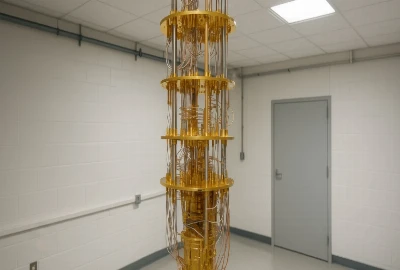Media Without Medium: The Rise of Neural Impressions and Direct-to-Mind Storytelling

Storytelling has always been tied to mediums—whether oral traditions around a fire, ink pressed onto pages, or pixels lighting up screens. Each evolution changed not only how stories were delivered, but also how they were experienced. Now, we are approaching a radical shift: media without medium. Neural impressions and direct-to-mind storytelling promise a future where narratives bypass screens, books, and sound altogether, flowing straight into human consciousness through brain-computer interfaces (BCIs).
The implications are staggering. Imagine experiencing a novel not by reading or listening, but by feeling its plot unfold in your mind. Consider films that play out as emotional landscapes rather than visual sequences. This isn’t science fiction anymore—research in neurotechnology, immersive computing, and affective storytelling is laying the groundwork for such experiences.
This blog explores the rise of neural impressions and direct-to-mind storytelling, unpacking the technologies, cultural shifts, creative opportunities, and ethical dilemmas surrounding this emerging frontier.
What Are Neural Impressions? Understanding the Core Concept

Direct narrative input
Neural impressions refer to the process of transmitting story elements—images, emotions, memories, or entire narrative arcs—directly into the brain. Unlike virtual reality or augmented reality, which rely on external devices, neural impressions collapse the gap between medium and mind. The story exists not outside you, but within you.
A departure from traditional media
This changes how we define media itself. Historically, every form of media has required a medium: sound waves for radio, printed pages for books, or light for cinema. Neural impressions erase this requirement. Instead of consuming, the audience experiences storytelling as internal states, encoded patterns, and subjective realities.
Examples in development
Early experiments with neurocinema, haptic feedback, and emotional AI hint at this transition. Brain-to-brain communication studies at institutions like Harvard and MIT show how simple signals can be transmitted between individuals. As technology progresses, these signals could evolve into full narrative “imprints”—complex bundles of story, character, and emotion.
The Technologies Making Direct-to-Mind Storytelling Possible

Brain-computer interfaces (BCIs)
Companies like Neuralink, Kernel, and NextMind are pioneering BCIs capable of reading and writing neural signals. BCIs could allow creators to design experiences where audience members receive stories directly through brain stimulation.
Neuro-adaptive storytelling
Artificial intelligence combined with neural monitoring could generate personalized narratives based on the audience’s mood, memories, and preferences. For example, if your brain registers sadness, the story could respond by offering comforting arcs or cathartic resolutions.
Sensory substitution and augmentation
Research in neuroprosthetics demonstrates how the brain can adapt to new inputs—such as blind individuals “seeing” through auditory cues. This adaptability could be harnessed for storytelling, allowing creators to introduce entirely new modes of experiencing narrative.
Together, these technologies make possible a future where direct-to-mind storytelling is not just immersive but indistinguishable from lived experience.
Creative Possibilities: Redefining Narrative Through Neural Impressions

Experiencing stories as feelings
Instead of watching a character cry on screen, you could feel the ache of loss within yourself. Direct-to-mind storytelling may prioritize emotional arcs over visual or auditory ones, creating deeply empathetic experiences.
Personalized storyworlds
Neural impressions could generate stories unique to each individual, shaped by their memories, desires, and subconscious associations. One person’s love story may unfold as nostalgia for a long-lost friendship, while another’s may echo with futuristic imagery.
Interactive inner worlds
Games and interactive narratives could expand into mental landscapes, allowing players to explore branching realities entirely within their minds. This would blur the line between dreaming and storytelling, turning imagination into co-authorship.
For creators, this opens a new canvas: not ink, film, or code, but the human brain itself.
Ethical and Cultural Questions Around Direct-to-Mind Media

Privacy and consent
If stories can be imprinted directly into the brain, how do we safeguard mental privacy? Unauthorized access or manipulation of thoughts could lead to unprecedented ethical challenges.
Authenticity and memory
Neural impressions might be so vivid that they blur the boundary between memory and fiction. Would experiencing a story feel the same as recalling a lived event? This could redefine how we think about identity and personal history.
Accessibility and inequality
Who gets access to neural storytelling technologies? If these experiences remain expensive or exclusive, they could widen cultural and economic divides, creating new “storytelling elites.”
As powerful as direct-to-mind storytelling could be, it requires frameworks of responsibility, cultural critique, and ethical safeguards.
The Future of Storytelling Without Medium

Beyond entertainment
Neural impressions won’t be limited to games or movies. They could revolutionize therapy by helping people relive, reframe, or release traumatic experiences. In education, entire histories could be felt instead of memorized. In communication, empathy could become a direct exchange of lived experience.
Collective story-sharing
Direct-to-mind media could also foster shared narratives where multiple individuals co-experience the same story simultaneously, creating collective memories that bind communities in profound ways.
Human creativity in the loop
Even as AI and BCIs power these experiences, human creativity will remain central. The questions of what stories matter and how they shape us are human ones. Direct-to-mind storytelling does not replace authorship—it expands its possibilities.
This is not just about consuming content but about redesigning how humans experience meaning itself.




